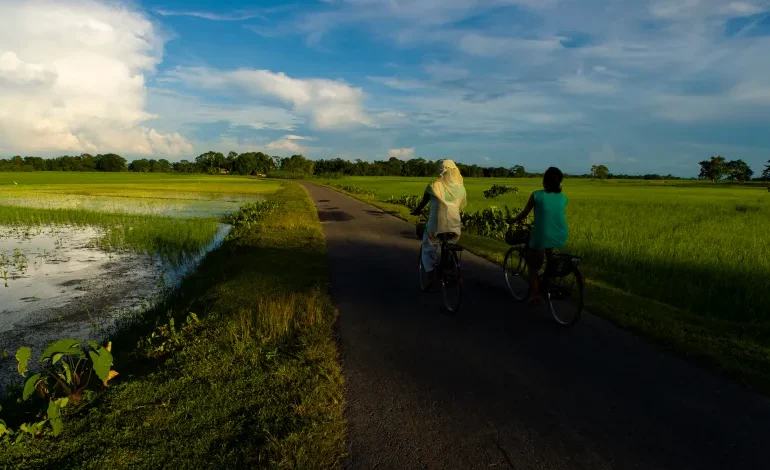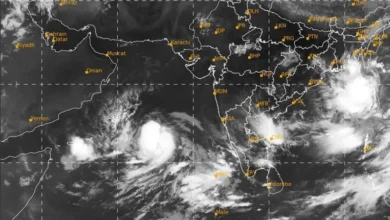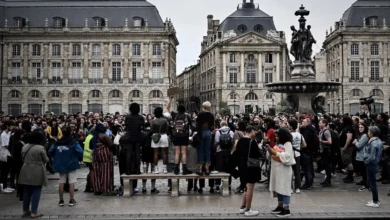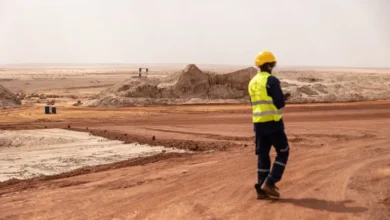On huge river island in India’s Assam, annual floods threaten local arts

Makon Kumar’s wrinkled fingers are covered in dried-up clay. She squats on the damp dirt outside her one-room, bamboo-stilted home and spins a pottery wheel – a palm-sized grey bowl – with her left toe.
Inside the bowl is a lump of newly-bought wet clay, which Kumar slaps, flattens and curves into the pot’s base.“My grandma and her grandma passed this practice down to us. We are not farmers, we have no land, and this is our work,” 60-year-old Makon said as she pressed her fist into the clay and carved out the pot’s mouth.
Makon belongs to the Kumar community of about 540 people, whose women have been known for their unique pottery work since the 16th century. These women avoid machinery or a potter’s wheel but rely on their toes to spin a plate or bowl with clay.
The Kumars live on Majuli, an island district between the Subansiri and the mighty Brahmaputra rivers in India’s northeastern state of Assam. Home to nearly 200,000 people, which includes people from other ethnic groups, Majuli has shrunk from 1,300sq km (502sq miles) to 483sq km (186.5sq miles) in a century due to erosion caused by annual monsoon rains and floods.
During the monsoon season, which can stretch from May to September, the floodwaters can get more than 1.5 metres (5 feet) high, forcing Makon and the other Kumars to either seek shelter at the highway bordering the village or stay trapped inside their homes.Last week, the Assam State Disaster Management Authority (ASDMA) said there were more than 72,000 people taking shelter in 355 relief camps across the state due to the floods, which have also killed at least 24 people this year.
Access to riverside clay denied
During the floods, the Kumars’ pottery business comes to a halt, interrupting their main source of income. Moreover, the lack of flood prevention efforts by the authorities has worsened their condition.
“[Our family] used to get clay from the banks of the Brahmaputra River,” Makon told Al Jazeera.
Kumar men traditionally dug 18 to 21 metres (60 to 70 feet) deep on the riverbank to extract a glutinous, dark grey clay that locals call Kumar “maati” (soil).The spokesperson said the board provided an alternative to the Kumar potters by making clay available through designated pits or boreholes that could be accessed after filling an application form. The board, however, did not say how many Kumars applied.
Makon said the embankment on the Brahmaputra forced her to buy clay from mainland Assam, increasing her expenses for a business already lacking commercial value or organised marketing.
November is their best month when floodwaters recede and foreign and Indian tourists take a 90-minute ferry from Jorhat, a city in mainland Assam, to Majuli’s Salmora village, where the Kumar women sculpt pots with their hands and feet. The tour brings extra cash for Makon’s two daughters studying in a secondary school.
On other days, the Kumars sculpt and sell pots of various sizes to local vendors. Tekelis, the most popular and smallest pot used for storing milk, is sold for just 10 rupees ($0.12) to vendors, who resell them for 20 to 100 rupees ($0.23-$1.15) at shops across Majuli and mainland Assam.
Salmora has long, narrow dirt roads, with rows of bamboo and concrete houses built on stilts. When the island is not flooded, hundreds of dried tekelis lie stacked on top of each other on a road bordering the village. The men bake those pots and sell them in the market.










